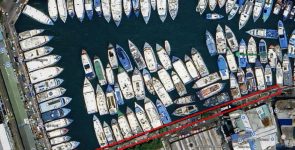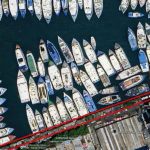
The Privatisation and Corporatisation Board’s Q1 2024 review of state-owned enterprises (SOEs) report shows profits have declined, while revenue and assets have grown, and some companies face liquidity and economic challenges.
The SOE sector saw a 5% increase in revenue, rising from MVR 13.09 billion in Q1 2023 to MVR 13.74 billion in Q1 2024. However, despite this revenue growth, profit generation dropped by 20%, with SOEs recording a total profit of MVR 1.69 billion in Q1 2024, compared to MVR 2.10 billion during the same period last year. The decline in profitability comes as a concern despite the sector’s increased earnings, signaling rising costs or operational inefficiencies.
Asset and Debt Growth
In terms of assets, the SOE sector experienced solid growth, with total assets rising by 11% from MVR 167.54 billion in Q1 2023 to MVR 186.39 billion in Q1 2024. However, this growth was accompanied by an increase in debt, with loans and borrowings also expanding by 11%, reaching MVR 33.82 billion in the first quarter of 2024.
The rise in debt levels suggests that many SOEs are increasingly reliant on borrowing to finance their operations, which may pose long-term financial risks if not managed carefully.
Mixed Liquidity Positions
Several SOEs, including HDC, STELCO, Dhiraagu, MPL, Aasandha, MTDC, and MACL, reported favorable short-term liquidity, meaning they are well-positioned to meet their short-term liabilities.
In contrast, IAS and Fenaka have lower current assets compared to their current liabilities, signaling potential difficulties in meeting immediate obligations. Additionally, MTCC, MWSC, and RDC reported lower cash balances relative to liabilities, raising concerns about their ability to handle short-term financial pressures.
As such, several SOEs are experiencing rising debt levels. MACL saw its loans and borrowings increase by 23%, while FENAKA recorded a 106% rise in loans, highlighting increasing financial strain for these companies.
Despite these challenges, some SOEs, like SDFC, managed to maintain stable borrowings with no new loans in Q1 2024, underscoring the differences in financial strategies within the sector.
Budget-Supported SOEs: Performance Breakdown
A detailed look at budget-supported SOEs reveals varying performance among the entities.
- VAMCO experienced a 31% increase in revenue (MVR 92.98 million), alongside a remarkable 88% increase in net profit (MVR 24.81 million), but posted an MVR 3 million loss.
- Addu International Airport Pvt Ltd reported an 11% drop in revenue, with its net profit declining by 11%.
- In terms of assets and liabilities, MMPRC saw a 12% decline in total assets, while FDC enjoyed a 79% increase in total assets to MVR 3.06 billion.
The total revenue for budget-supported SOEs reached MVR 215 million, but overall they posted a MVR 75 million loss.
Self-Sufficient SOEs: Mixed Results
- HDC showed strong revenue growth of 7% (MVR 1.05 billion), though its net profit plummeted by 85% to MVR 90.85 million.
- BML performed relatively well, with a 10% rise in revenue to MVR 1.22 billion, though its net profit dropped by 2% to MVR 492.66 million.
- FENAKA recorded the largest revenue increase at 16%, while its net profit remained stable.
On the downside, MTCC faced a 97% decline in gross profit, alongside a staggering 88% drop in net profit to MVR 5.24 million. STO, despite its 1% rise in revenue, saw a 28% fall in net profit.
Across all sectors, self-sufficient SOEs posted a combined revenue of MVR 13.5 billion with a net profit of MVR 1.76 billion.
Financial Support for SOEs: Capital, Grants, and Subsidies
The government’s total contributions to SOEs saw a 1% decline, falling from MVR 1,337.46 million in Q1 2023 to MVR 1,325.66 million in Q1 2024. The decline came despite moderate growth in several areas:
- Grants increased by 3%, from MVR 58.91 million in Q1 2023 to MVR 60.47 million in Q1 2024.
- Subsidies grew by 2%, from MVR 1,194.36 million in Q1 2023 to MVR 1,219.92 million in Q1 2024.
- Capital injections saw the highest growth, up 9%, rising from MVR 151.19 million to MVR 164.94 million.
Specifically, HDC received MVR 400 million in capital, the highest among the group, followed by STO with MVR 359.33 million and FENAKA with MVR 249.87 million. Other companies like SDFC and IAS saw significant capital injections of MVR 30 million and MVR 16.47 million, respectively.
Among the budget-supported SOEs, RACL stood out with MVR 24.90 million in capital, followed by FDC at MVR 10.58 million. Financial aid in the form of grants and subsidies helped other SOEs stay afloat, with Maldives Post receiving MVR 2.50 million and MSCL MVR 1.12 million.
Future Outlook
While the SOE sector has experienced growth in revenue and assets, profitability has taken a sharp hit. The mixed performance across individual enterprises and rising debt levels suggest potential challenges ahead, particularly for companies struggling with liquidity issues. These trends underline the need for strategic financial management and increased government oversight to ensure long-term stability within the SOE sector.













